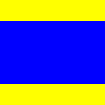D
|
|
|||||
|---|---|---|---|---|---|
| Basic Latin alphabet | |||||
| Aa | Bb | Cc | Dd | ||
| Ee | Ff | Gg | Hh | ||
| Ii | Jj | Kk | Ll | Mm | Nn |
| Oo | Pp | Rr | Ss | Tt | |
| Uu | Vv | Ww | Xx | Yy | Zz |
D (![]() /ˈdiː/; named dee)[1] is the fourth letter in the basic modern Latin alphabet.
/ˈdiː/; named dee)[1] is the fourth letter in the basic modern Latin alphabet.
Contents |
History
| Egyptian hieroglyph door |
Proto-Semitic Dal, Daleth |
Phoenician daleth |
Greek Delta |
Etruscan D |
Roman D |
|---|---|---|---|---|---|
  |
 |
 |
 |
The Semitic letter Dâlet probably developed from the logogram for a fish or a door. There are various Egyptian hieroglyphs that might have inspired this. In Semitic, Ancient Greek, and Latin, the letter represented /d/; in the Etruscan alphabet the letter was superfluous but still retained (see letter B). The equivalent Greek letter is Delta, ‹Δ›.
The minuscule (lower-case) form of ‹d› consists of a loop and a tall vertical stroke. It developed by gradual variations on the majuscule (capital) form. In handwriting, it was common to start the arc to the left of the vertical stroke, resulting in a serif at the top of the arc. This serif was extended while the rest of the letter was reduced, resulting in an angled stroke and loop. The angled stroke slowly developed into a vertical stroke.
Usage
In most languages using the Latin alphabet, ‹d› represents the voiced alveolar plosive /d/, but in the Vietnamese alphabet it represents the sound /z/ in the north and /j/ in the south. In Fijian it represents a prenasalized stop /nd/.[2] In some languages where voiceless unaspirated stops contrast with voiceless aspirated stops, ‹d› represents an unaspirated /t/, while ‹t› represents an aspirated /tʰ/. Examples of such languages include Icelandic, Scottish Gaelic, Navajo, and the Pinyin transliteration of Mandarin.
Representations
In Unicode the capital ‹D› is codepoint U+0044 and the lower case ‹d› is U+0064.
The ASCII code for capital ‹D› is 68 and for lower case ‹d› is 100; or in binary 01000100 and 01100100, respectively.
The EBCDIC code for capital ‹D› is 196 and for lowercase ‹d› is 132.
The numeric character references in HTML and XML are "D" and "d" for upper and lower case, respectively.
In British Sign Language (BSL), the letter ‹d› is indicated by signing with the right hand held with index and thumb extended and slightly curved and tip of thumb and finger held against extended index of left hand.
See also
- D (musical note)
- Eth (Ð, ð)
- D with stroke (Đ, đ)
- Hooked D (Ɗ, ɗ)
- Д, д - De (Cyrillic)
 , ∂ (the partial derivative symbol)
, ∂ (the partial derivative symbol)- D (programming language)
References
- ↑ "D" Oxford English Dictionary, 2nd edition (1989); Merriam-Webster's Third New International Dictionary of the English Language, Unabridged (1993); "dee", op. cit.
- ↑ Lynch, John (1998). Pacific languages: an introduction. University of Hawaii Press. p. 97. ISBN 0824818989. http://books.google.com/books?id=zYfV1jN3whUC&pg=PA97&dq=d+fijian+prenasalized&as_brr=3#v=onepage&q=d%20fijian%20prenasalized&f=false.
| Aa | Bb | Cc | Dd | Ee | Ff | Gg | Hh | Ii | Jj | Kk | Ll | Mm | Nn | Oo | Pp | Rr | Ss | Tt | Uu | Vv | Ww | Xx | Yy | Zz | |
|
Letter D with diacritics
history • palaeography • derivations • diacritics • punctuation • numerals • Unicode • list of letters • ISO/IEC 646 |
|||||||||||||||||||||||||


